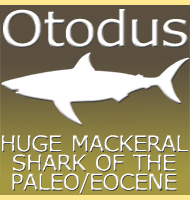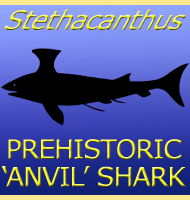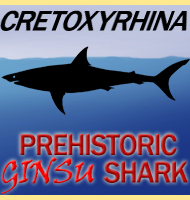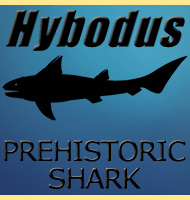


Carcharomodus
a.k.a serrated mako, Escher's mako

Name:
Carcharomodus
(jagged similar tooth).
Phonetic: Kar-ka-ro-mo-dus.
Named By: Agassiz - 1843.
Classification: Chordata, Chondrichthyes,
Lamniformes, Lamnidae.
Species: C. escheri (type).
Diet: Carnivore/Piscivore.
Size: Average body length estimated at up to 4
meters long. However, isolated remains and differing techniques of
establishing body size from teeth have suggested that larger
Carcharomodus might have reached 4.5 or even 5 meters in length.
Known locations: Atlantic coast regions of North
America and Europe.
Time period: Miocene.
Fossil representation: Mostly teeth, but ossified
vertebrae are also known.
Carcharomodus
are thought to have been much like modern day mako sharks of the Isurus
genus. This is based upon the observation that the overall shape of
the teeth of Carcharomodus are almost identical to
those seen in mako
sharks. The only real clear difference is that the teeth of
Carcharomodus are strongly serrated. Whereas
modern day mako sharks
are very fast swimming predators of fish capable of jumping clear of
the surface of the water, Carcharomodus might have
been a more
generalist predator. This is because the serrations on the teeth of
Carcharomodus would have been more suited to cutting
up the tough flesh
and tissues of marine mammals such as pinnipeds (seals), and
small whales. Strongly serrated are generally unnecessary for fish
capture.
Up
until the description of Carcharodon
hubbelli, Carcharomodus
was
thought to have possibly been the missing link between modern great
white and mako sharks. Now however it seems that Carcharomodus
has
no descendants that have survived into modern times.
Further reading
- A partial skeleton of a
new lamniform mackerel shark from the Miocene of Europe. - Acta
Palaeontologica Polonica 60 (4): 857–875. - J�rgen
Kriwet, Heike Mewis & Oliver Hampe - 2015.
- Origin of the white shark Carcharodon
(Lamniformes: Lamnidae)
based on recalibration of the Upper Neogene Pisco Formation of Peru.
- Palaeontology. 55 (6): 1139–1153. - Dana J.
Ehret, Bruce J. MacFadden, Douglas S. Jones, Thomas J.
Devries, David A. Foster, Rodolfo Salas-Gismondi - 2012.
----------------------------------------------------------------------------
Random favourites
 |
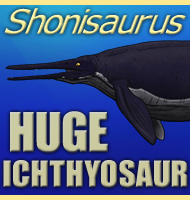 |
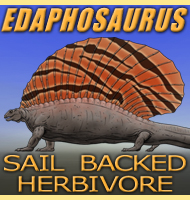
|
 |
